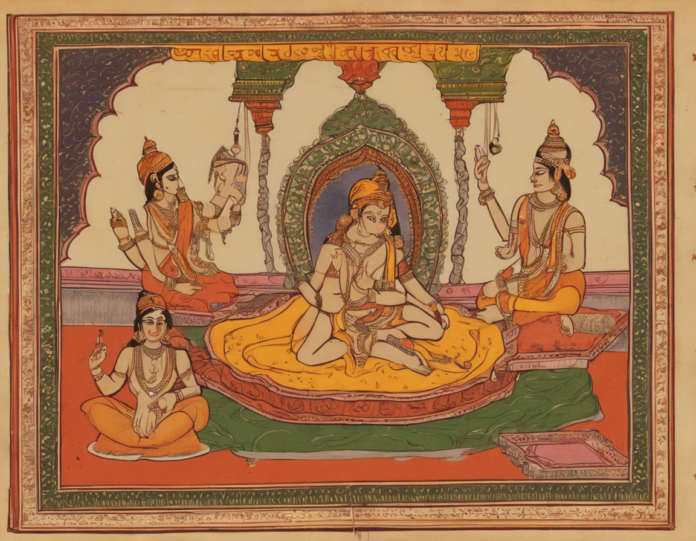There is a timeless piece of literature that has captivated readers for centuries with its exploration of human sexuality, intimacy, and relationships. This ancient Indian text is known as the Kama Sutra, and while many people have heard of it, there is often confusion and misinformation surrounding this renowned work. In this blog post, we will delve into the Kama Sutra, its origins, its significance, and its enduring relevance in today’s world.
Origins of the Kama Sutra
The Kama Sutra is a Sanskrit text that dates back to the 2nd century CE in ancient India. The author, Vatsyayana, is believed to have been a scholar and philosopher who compiled various texts on the art of love and sexuality into what we now know as the Kama Sutra. The title itself can be translated to mean “The Kama (Desire) Sutra (Treatise).” While many people associate the Kama Sutra solely with the physical aspects of love-making, the text also delves into the emotional, psychological, and spiritual dimensions of human relationships.
Contents of the Kama Sutra
One of the common misconceptions about the Kama Sutra is that it is a manual exclusively focused on sexual positions. While the text does indeed include detailed descriptions of various sexual postures and techniques, it is much more than a mere guide to physical intimacy. The Kama Sutra is divided into seven sections, each of which addresses a different aspect of human relationships:
1. General Principles: This section sets the foundation for the entire text, discussing the three aims of life – Dharma (duty and righteousness), Artha (wealth and success), and Kama (desire and pleasure).
2. Sexual Union: Here, the Kama Sutra explores various sexual positions, techniques, and the importance of foreplay in creating a deeper connection between partners.
3. Acquiring a Wife: This section delves into the process of courtship, marriage, and the qualities to look for in a life partner.
4. Duties and Privileges of a Wife: The Kama Sutra emphasizes the importance of mutual respect, communication, and understanding within a marital relationship.
5. Other Men’s Wives: While controversial, this section discusses extramarital relationships and the various scenarios in which such relationships may occur.
6. Courtesans: The Kama Sutra examines the role of courtesans in society and the ways in which they can provide companionship, entertainment, and fulfillment for men.
7. Occult Practices: The final section touches on mystical and supernatural practices related to love and desire.
Relevance of the Kama Sutra Today
Despite being written over a thousand years ago, the Kama Sutra continues to hold significance in the modern world. Its teachings on communication, intimacy, and the importance of mutual pleasure and satisfaction in relationships are timeless and universal. In a society that often struggles with issues of sexuality, consent, and healthy relationships, the Kama Sutra offers valuable insights that can help individuals navigate the complexities of love and intimacy.
Furthermore, the Kama Sutra celebrates the diversity of human desires and preferences, emphasizing that there is no one-size-fits-all approach to relationships. By encouraging open and honest communication between partners, the text promotes a deeper understanding of one’s own needs and those of their significant other.
FAQs about the Kama Sutra
1. Is the Kama Sutra only about sex?
While the Kama Sutra does contain detailed descriptions of sexual positions, it also explores various aspects of human relationships, including courtship, marriage, and communication.
2. Is the Kama Sutra appropriate for everyone?
The Kama Sutra is a text that celebrates human desires and relationships, but some may find certain sections controversial or outdated. It is essential to approach the text with an open mind and consider its teachings within their historical context.
3. Can the Kama Sutra benefit modern relationships?
Yes, the Kama Sutra offers valuable insights into communication, intimacy, and mutual pleasure that can enhance modern relationships. However, it is essential to adapt its teachings to fit contemporary values and norms.
4. Is the Kama Sutra only for heterosexual couples?
While the Kama Sutra was written in a different cultural context, its teachings on intimacy and relationships can be applied to couples of any sexual orientation or gender identity.
5. Are the sexual positions in the Kama Sutra difficult to perform?
Some of the sexual positions described in the Kama Sutra may be challenging for everyone to perform, but the text emphasizes the importance of creativity, communication, and mutual pleasure over achieving physical contortions.
In conclusion, the Kama Sutra is a multifaceted text that offers much more than just a guide to sexual positions. It is a comprehensive exploration of human desires, relationships, and intimacy that continues to resonate with readers across the globe. By understanding the cultural and historical context of the Kama Sutra and extracting its timeless wisdom, individuals can enrich their relationships and deepen their connection with their partners.


Recent comments